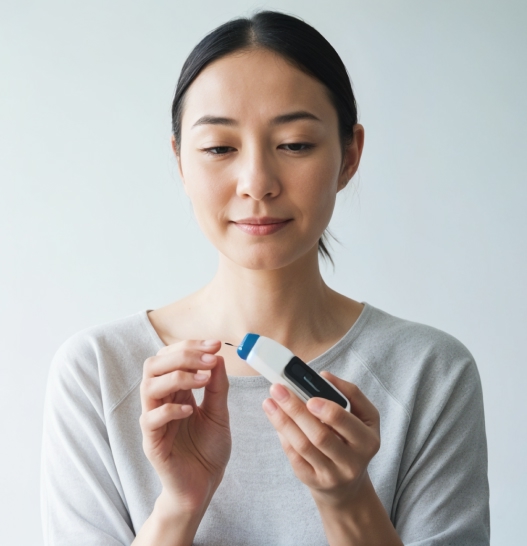The Medical Device Regulation (MDR) has now been in force for several years. There are transition periods for legacy devices, i.e. products that have already been approved. These ensure that these products may remain on the market even before recertification according to MDR standards.
In this article, we clarify the following questions:
- Why are there new transition periods at all?
- What are the new transition periods for medical devices now?
- To which conditions are they linked?
- Where exactly is all this in the MDR?
- What do you need to do if your MDD certificates expire in the near future?
Why are there new transition periods at all?
In order to remain on the market, already approved medical devices must be reassessed according to MDR standards.
With the introduction of the MDR, many medical devices suddenly fall into different risk classes. This often means that Notified Bodies must now be involved in the conformity assessment for many products for which this was not previously the case.
In addition, Notified Bodies had to be re-designated for the introduction of the MDR.
These two circumstances are causing a great rush for new approvals. The few Notified Bodies cannot cover the high demand and a “bottleneck” occurs.
Accordingly, re-certification of the high number of medical devices by the original deadline of May 26, 2024 is not possible at all. In response, the European Commission has decided to extend the transition periods again.
What are the new transition periods for medical devices now?
An important note at the beginning: The MDR continues to apply to all new medical devices. Nothing has been moved backwards here!
The following deadlines apply:
Class I: 26.05.2021 (nothing changes here!)
Class Ir: 31.12.2028
Class Is: 31.12.2028
Class Im: 31.12.2028
Class IIa: 31.12.2028
Class IIb: 31.12.2028
Class IIb (implantable devices): 31.12.2027
Class III: 31.12.2027
Class III (implantable devices): 26.05.2026
The transitional provisions of the MDR in detail
The transitional provisions of the MDR must be met in order for your product to remain on the market until the end of the transitional periods. All of the items listed here are sub-items of Article 120 of the MDR. We have always prefixed you with the quote from the MDR and then written our interpretation underneath:
„(3) By way of derogation from Article 5 of this Regulation, a device with a certificate that was issued in accordance with Directive 90/385/EEC or Directive 93/42/EEC and which is valid by virtue of paragraph 2 of this Article may only be placed on the market or put into service provided that from the date of application of this Regulation it continues to comply with either of those Directives, and provided there are no significant changes in the design and intended purpose.“
- If your product has been approved under 93/42/EEC (MDD) or 90/385/EEC (Active Implantable Medical Devices Directive) and the intended purpose and design of the product have not changed significantly, it may continue to be marketed. (Until the end of the transition periods)
„However, the requirements of this Regulation relating to post-market surveillance, market surveillance, vigilance, registration of economic operators and of devices shall apply in place of the corresponding requirements in those Directives”
- Post-market surveillance and vigilance system must be up to date since the introduction of the MDR! What exactly the MDR expects from you regarding vigilance and market surveillance can be found in chapter VII of the MDR.
„(4) Devices lawfully placed on the market pursuant to Directives 90/385/EEC and 93/42/EEC prior to 26 May 2020, and devices placed on the market from 26 May 2020 by virtue of a certificate as referred to in paragraph 2 of this Article, may continue to be made available on the market or put into service until 27 May 2025.“
- Your product must have been approved before May 26 in accordance with the directives already mentioned above (93/42/EEC (MDD) or 90/385/EEC (Active Implantable Medical Devices Directive)).
„(11) Clinical investigations which have started to be conducted in accordance with Article 10 of Directive 90/385/EEC or Article 15 of Directive 93/42/EEC prior to 26 May 2020 may continue to be conducted. As of 26 May 2020, however, the reporting of serious adverse events and device deficiencies shall be carried out in accordance with this Regulation.“
- The MDR focuses not only on new medical devices, but also on ensuring that no serious events or defects occur. If they do occur, they must be reported and corrected.
In addition:
- You must have a quality management system in place according to MDR standards. The deadline for this is May 26, 2024. You can read exactly what this QMS must look like in Article 10(9) of the MDR. The minimum requirements are described here in subsections a) to m).
What can be done when MDD certificates expire in the near future?
Here you can submit a formal request for conformity assessment. You must have done this by May 26, 2024. You can find out exactly what must be included in Annex VII, paragraph 4.3 of the MDR. In addition, you must have jointly signed a written agreement with the Notified Body. (Here, the deadline is September 26, 2024).
In addition, a competent authority may allow an exemption from the conformity procedure. Article 59 of the MDR states:
„By way of derogation from Article 52, any competent authority may authorise, on a duly justified request, the placing on the market or putting into service within the territory of the Member State concerned, of a specific device for which the procedures referred to in that Article have not been carried out but use of which is in the interest of public health or patient safety or health.” (Source: MDR; Article 59, Paragraph 1).
In addition: The sell-off period is to be eliminated
The sell-off provision ensures that medical devices that were placed on the market before the MDR came into force or during the transition period from MDD to MDR will continue to be made available until May 2025 and will be withdrawn from the market as of then (stipulated in Article 120(4) of the MDR). These are always products whose safety has already been demonstrated!
This regulation is now to be dropped according to Article 120(4) of the MDR. Medical devices already placed on the market may therefore continue to be sold beyond 2025.
The reasons for this: Adherence to such a regulation would possibly ensure that safe medical devices would have to be disposed of. The deletion of the deadline is also intended to prevent a bottleneck of affected products.
And then? What usability requirements do you have to meet for the conformity assessment procedure?
Once the transition periods have passed, your product must demonstrably meet the usability requirements of the MDR. What do these requirements look like in detail? We have listed and “translated” all the requirements in the following article: “Deep Dive: MDR and Usability“.
Conclusion
The new transition periods are subject to the following conditions:
- Your product is still compliant with the MDD or 93/42/EEC.
- Neither the intended purpose nor the design of your product has changed.
- You have established a quality management system according to MDR requirements by May 26, 2024 at the latest.
- No unacceptable new risks for the use of your product occur
- Your product continues to meet MDR requirements for post-market surveillance, market surveillance and vigilance
- (If your MDD certificate expires) You have submitted a formal application to a Notified Body for conformity assessment of your product by May 26, 2024.
- (Should your MDD certificate expire) A written agreement has been signed between you and the Notified Body September 26, 2024.
Are any of your products affected by the changes? What is your specific case? Get in touch via our contact form. We are looking forward to hearing from you.



